
One of the attractions of the Salmonberry tour in Fairbanks was the opportunity to see the northern lights. Fairbanks is well-positioned with respect to the auroral oval so that on most evenings, if the sky is clear, one can see them. And we were there at the vernal equinox– spring: the weather was moderating, meaning that the daytime temps were approaching melting and at night they kept mostly above zero. At this high latitude however, the days are lengthening rapidly, and in a few more weeks, there won’t be much night left to see northern lights.
It was nice that the tour was focused on aurora viewing. There is always uncertainty: the aurora is not active every night, and clouds frequently obscure them when they are. To maximize the chance that we would see some northern lights sometime during the tour, three nights were scheduled for such viewing. Each took us to a viewing site away from the lights of Fairbanks and accommodated the needs of aurora viewers: a warming house, coffee and snacks, and alternate activities in the event of poor viewing. Oh, and a wifi connection so we could monitor the online real-time aurora activity reports being fed by satellites and observers on the ground.
If there was any likelihood of seeing them, we would remain until we did. Our return to the hotel was usually around 3:00 am. Not that we could easily sleep after the pleasures of watching the northern lights; I wanted to review the pictures I had taken. Fortunately, the itinerary took account of this, allowing us to sleep in. We missed the complimentary hotel breakfast, but enjoyed discovering “The Crepery” and their wonderful breakfast crepes across the street.
Our first outing was to a ski area where we took shelter in a ski patrol hut. It was quite appreciated; the temperatures fell below zero and the winds made it difficult to stay out for long. I set up my camera on an intervalometer. I intended to take a picture every 5 seconds, a nice pace for timelapses of clouds and, I presumed, aurora. I did not see any auroral glow, but the stars that poked through the thin clouds would make a nice sequence even without the lights. Once I was satisfied with the focus, I started the camera’s automated exposures and returned to the warmth of the patrol hut.
Most of the evening was spent waiting. Although we couldn’t see the aurora, it seems that my camera could! After each exposure, it would show a preview of what it caught, and passersby noticed that the little display on the back of the camera had a slight green glow. Yes, there was a faint aurora, but it wasn’t until 1:30 am that it brightened up to be seen by eye. And when it did, it was spectacular. We had a show that lasted for about 20 minutes that included bands that flowed like a river all the way across the sky, east to west horizon. At one point the river started pulsating silently above us. For another brief moment, the aurora was directly overhead, creating a distinct radial burst from the zenith. We were all thrilled!
The lights diminished and we packed up to return to our Fairbanks hotel, not falling asleep right away. But after we did, and on waking up the next morning, Poldi happily noticed that “her neck hurt” from looking up at that wonderful display high in the sky.
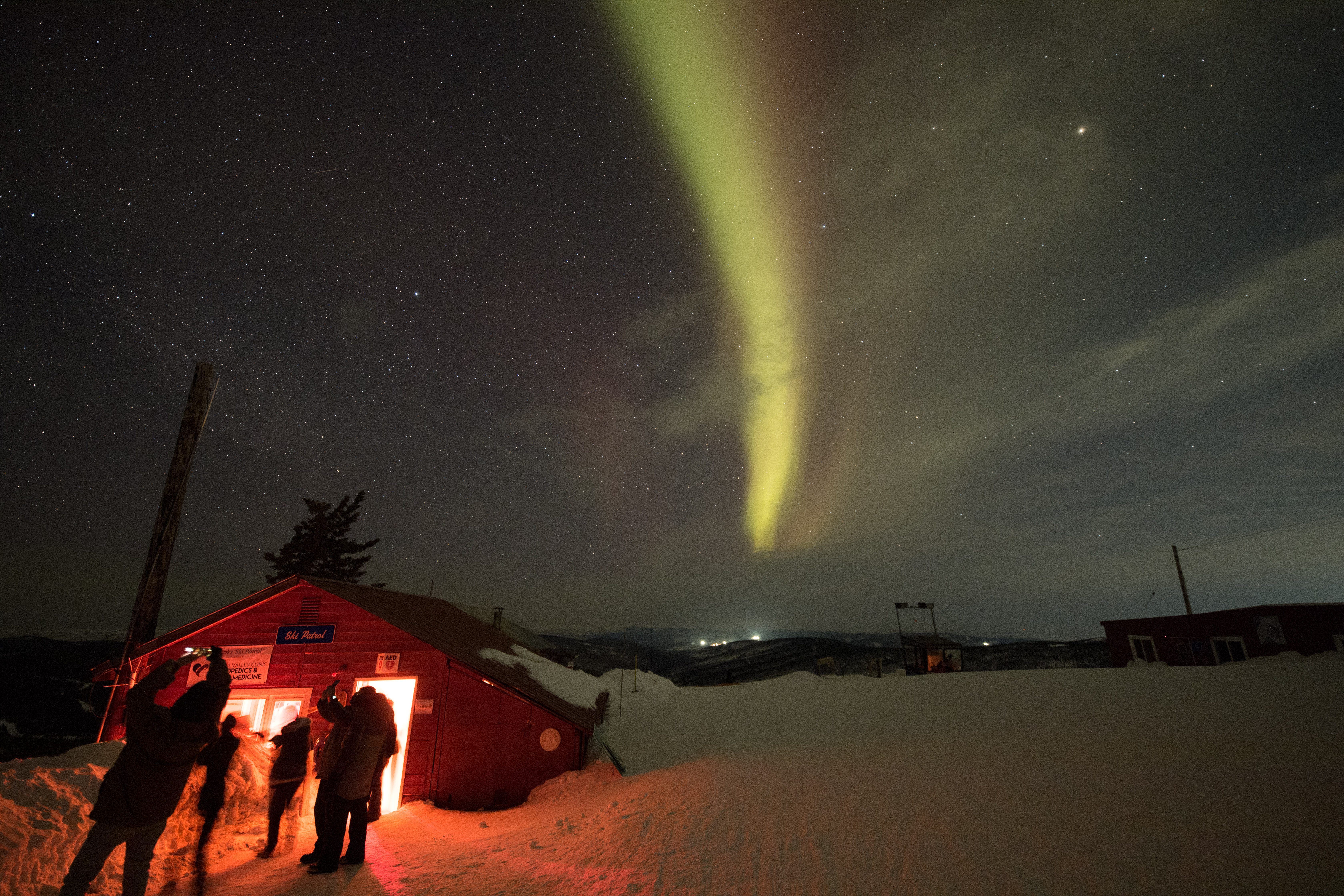
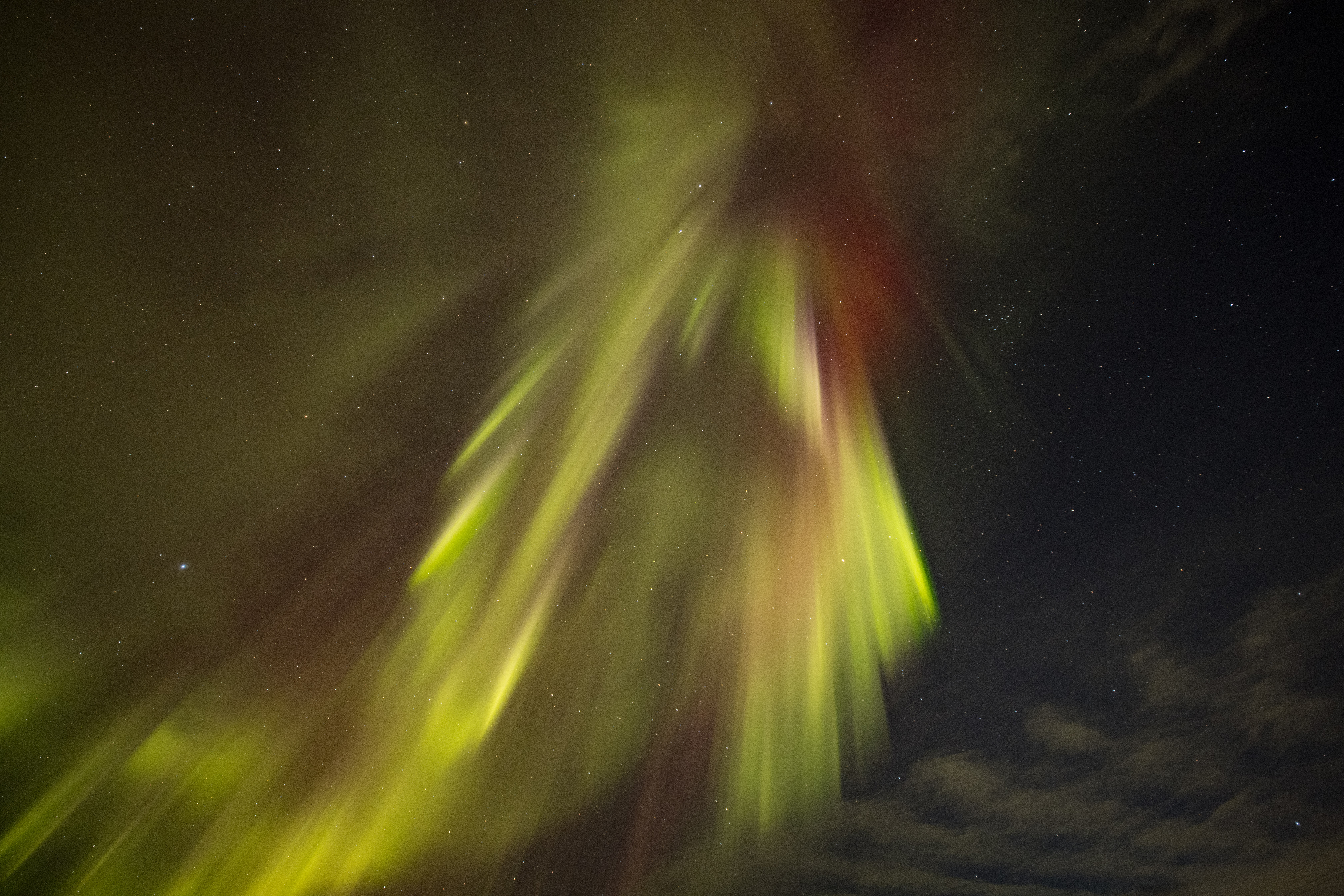
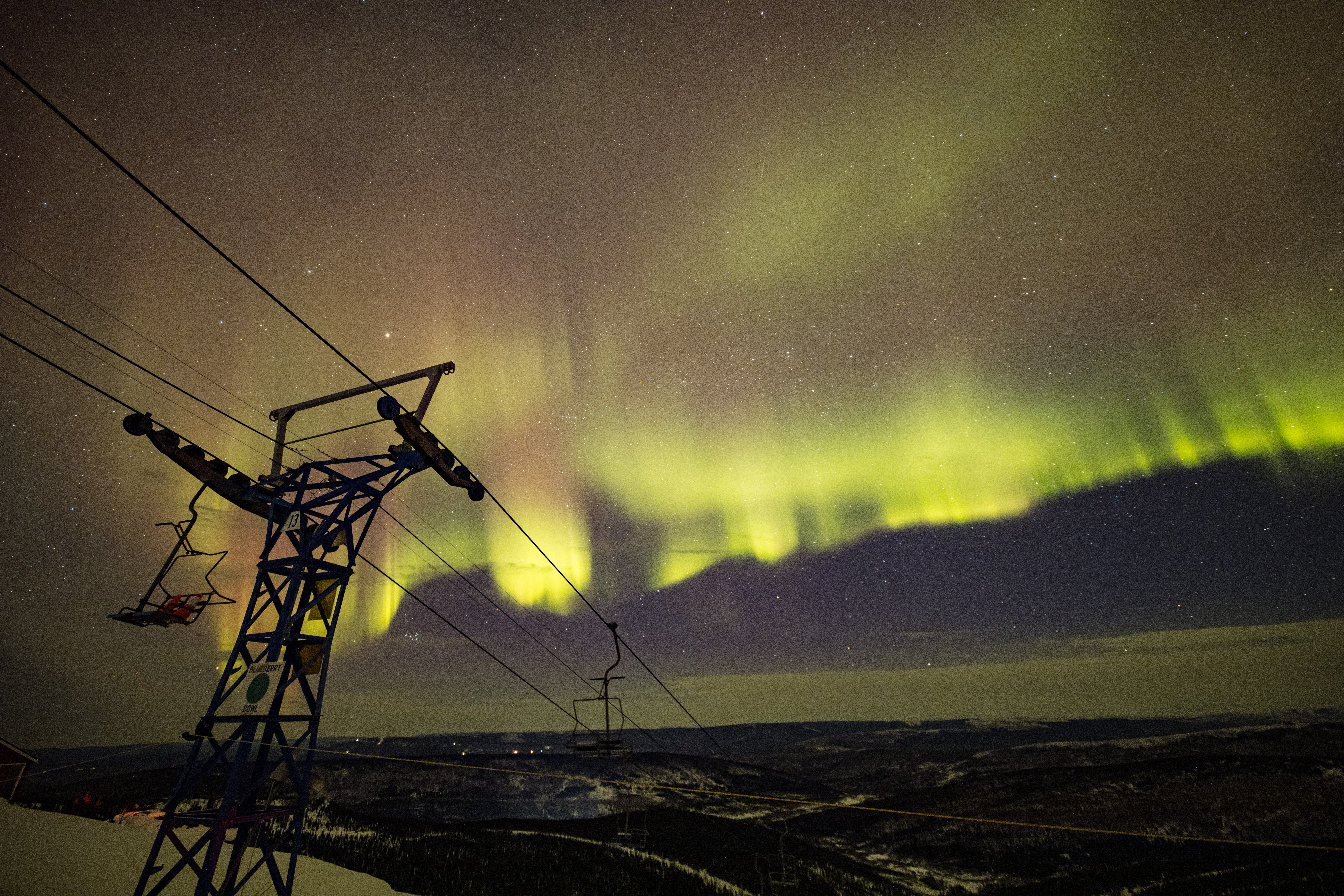
The next night’s observing took us to a facility that catered to just this activity—tourists wanting to see the northern lights. “Aurora Pointe” was a larger venue, capable of hosting 100 guests, of which we were 14 of perhaps 50. A large meeting room provided the same aurora viewing needs: warmth, refreshments, cloudy night activities, and a real-time display of the aurora conditions.
The weather was much warmer than the previous night—high 20s and we were more comfortable being outside and watching. I set up my camera again, this time turning off the image preview feature—it had impacted my previous night’s sequence, slowing it to a 10 second interval instead of my desired 5. Once again, the glow of the aurora was below our visual threshold. The camera would record the drifting stars, and maybe some faint aurora.
Eventually, the auroral oval intensified and we were treated to another display. Not as energetic as we had witnessed the night before, but longer lasting, and varying in pattern and direction. I was able to obtain several timelapse sequences, including one that included aurora viewers enjoying the display and taking selfies in front of it.
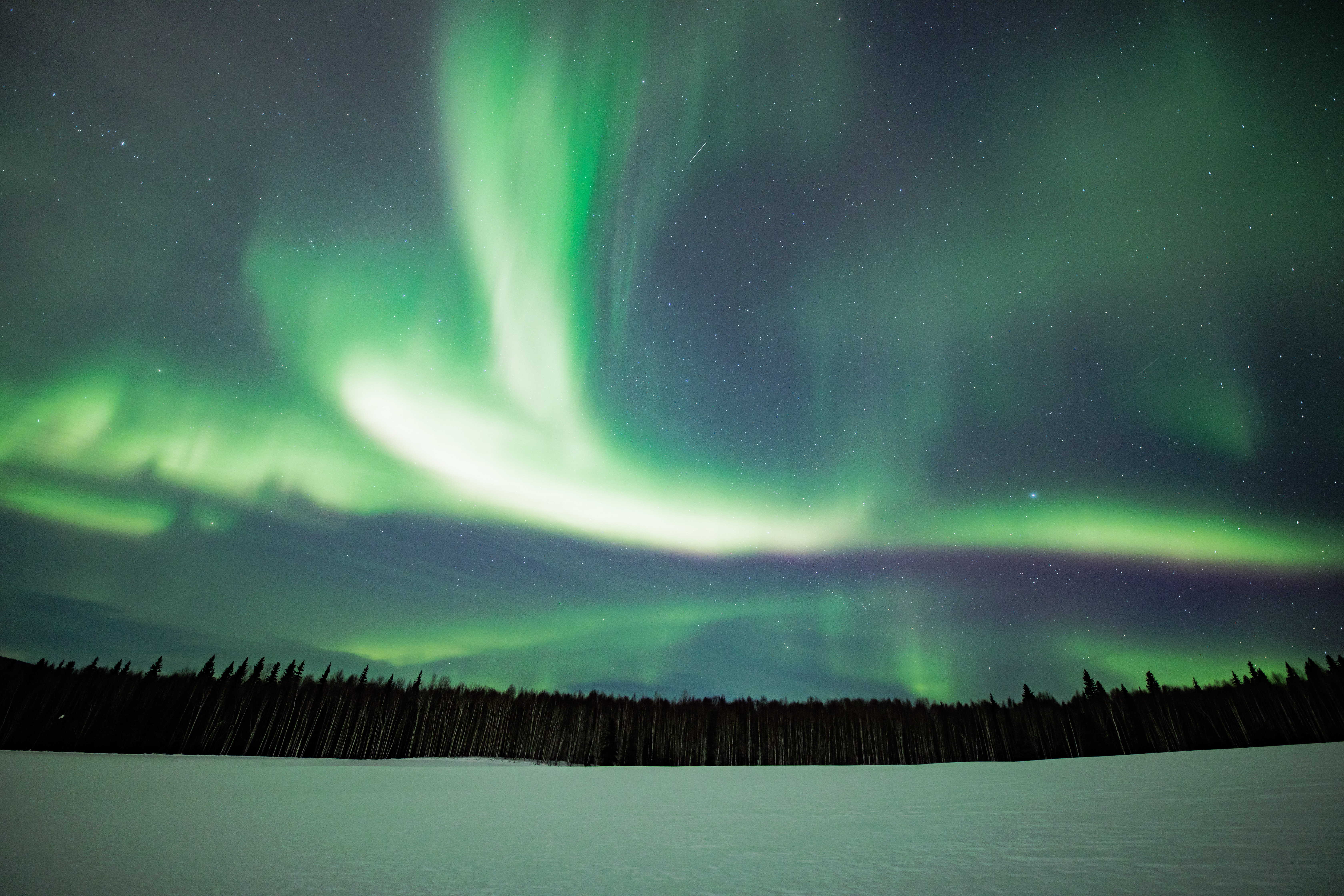
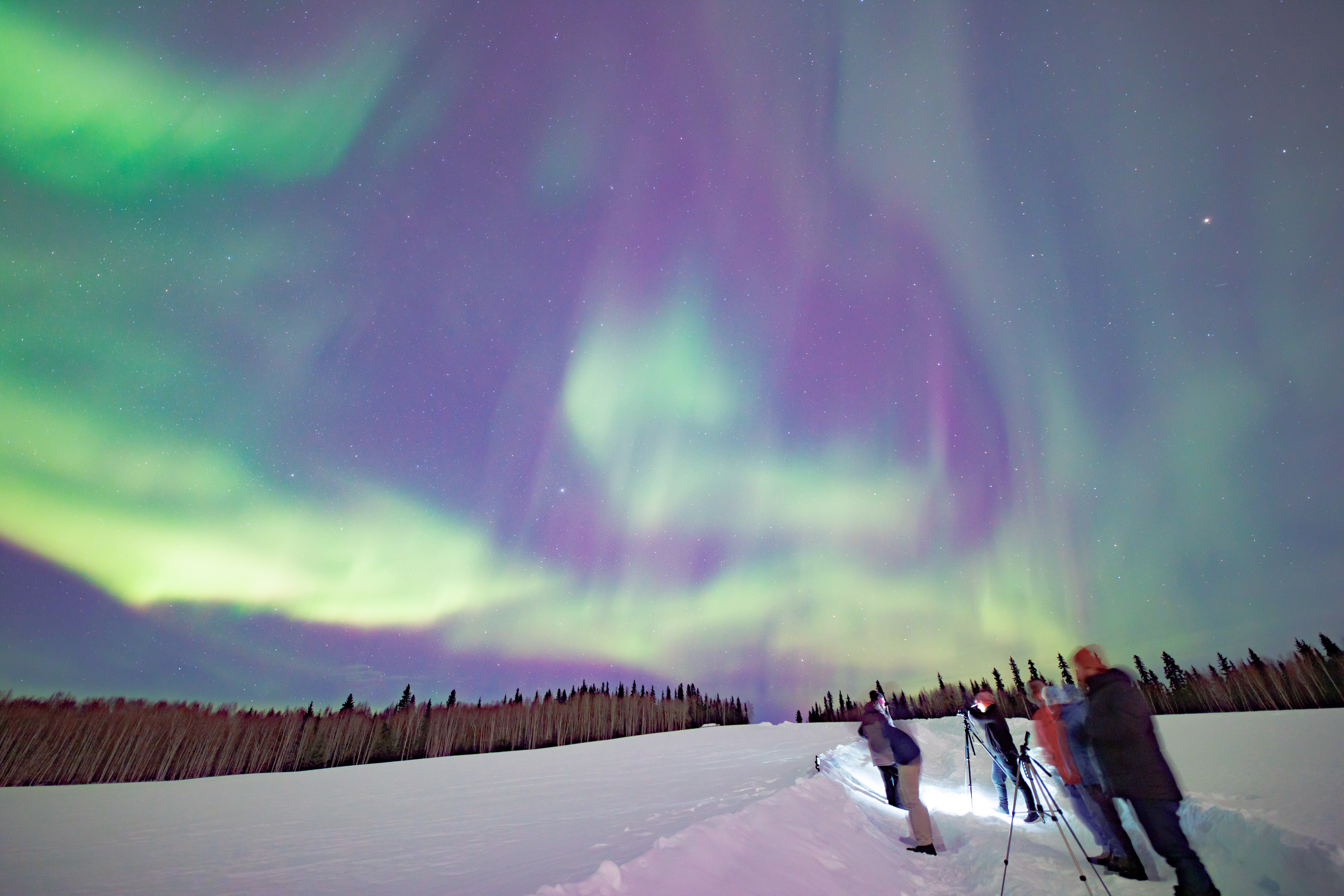
Our clear sky luck ran out on the third night, but we enjoyed an evening in the home of a couple who had invested in the concept of aurora tourism and are the inspiration and energy behind “Aurora Bear”, offering classes and outings to teach visitors about aurora and wildlife photography. We were the students that night and embarked on a snowshoe hike into their Alaskan landscape. Had the skies been clear, we would have been watching and photographing aurora.
This was my second aurora-focused tour, and I learned some more about how to capture northern lights with a camera. I assembled my efforts into a short timelapse movie. I am not entirely satisfied, but it represents my current skill level and what I was able to do on this wonderfully organized tour. It provides motivation and anticipation for the next one.
[For best effect, expand the view to full-screen.]


Wow your photos are fantastic and so are the Northern Lights. It’s one of the natural fenomens I would love to see one day. Thanks for sharing and have a good day ☺️ Aiva
I’ve been fortunate enough to see the Aurora borealis – but capturing it like this in a film – including meteors – was spectacular!
Beautiful, Thor!
Sent from my iPhone
>
Magical.
Pingback: Franconia Aurora | Thor's Life-Notes